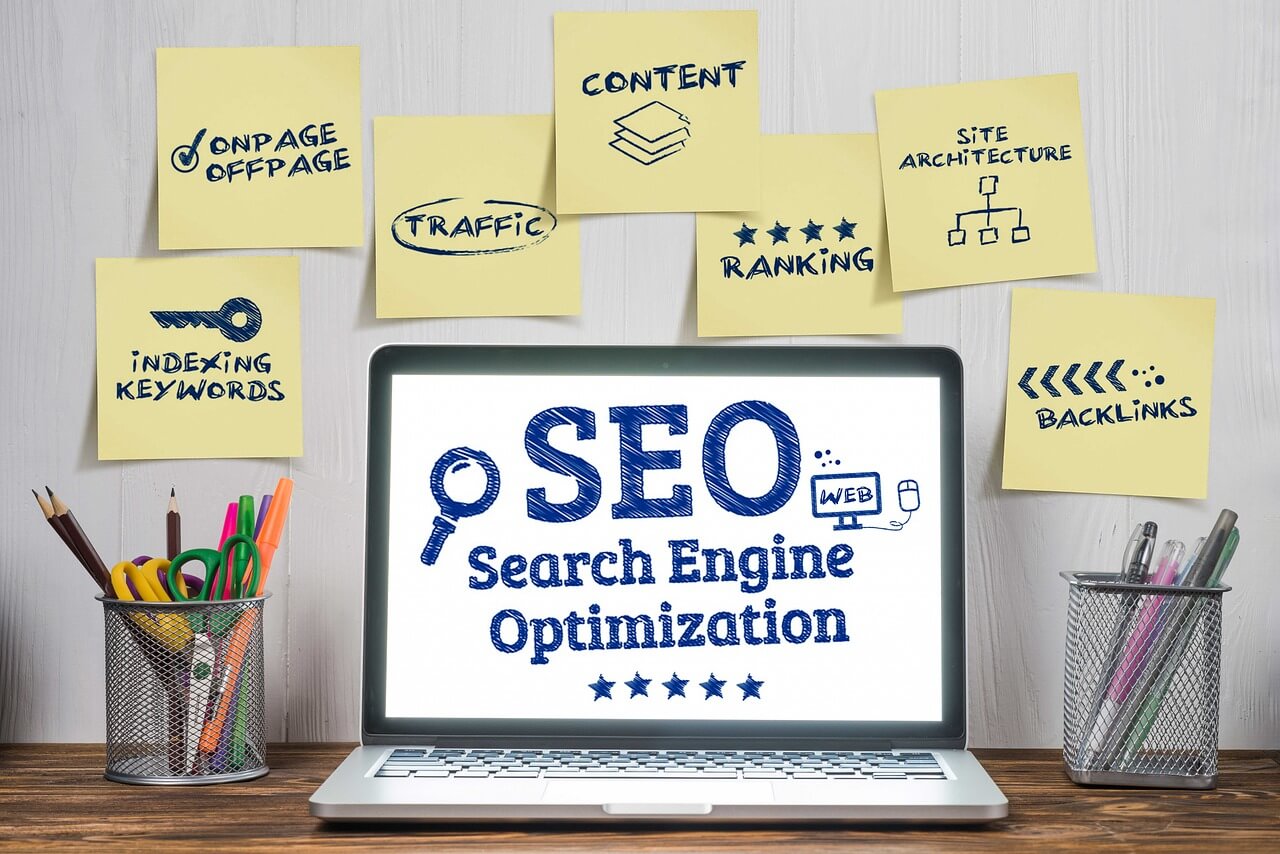Basic SEO Terms and Their Meanings
In this article, we will discuss 39 of the most commonly used terms in SEO.
Basic SEO Terms:
1. Keyword:
Keywords are terms entered by users into search engines. In SEO, selecting the right keywords to reach the target audience and strategically using them in content helps the website rank higher in search results.
2. Meta Tags:
Meta tags contain information such as title and description found between the HTML codes of web pages. These tags help users better understand the content and encourage clicks by determining the information displayed on the search results page.
3. Page Speed:
Page speed determines how fast a website’s pages load. Fast-loading pages enhance user experience and are positively evaluated by search engines. Page speed is even more critical for mobile devices.
4. Backlink:
A backlink is a link from one website to another. Backlinks from authoritative and high-quality sites enhance a website’s authority, contributing to higher rankings in search results.
5. SSL Certificate:
An SSL certificate is a security protocol encrypting communication between a website and a user. Using SSL indicates that a website is secure and helps gain user trust.
6. Robots.txt:
The robots.txt file is a text file specifying which pages search engines can crawl. When used correctly, it provides control over a website’s indexing.
7. Google Analytics:
Google Analytics is a free Google tool used to track and analyze website traffic. It offers detailed data on website performance, providing essential information to improve strategies.
8. Search Console:
Google Search Console allows webmasters to monitor website performance, fix errors, and gather information about search results. It is effective for website indexing and visibility.
9. Indexing:
Indexing is the process where search engines add web pages to their databases. Indexed pages become visible in search results and can be presented to users.
10. Breadcrumb:
Breadcrumb is a series of links showing users the navigation path on a website. This helps users better understand their location within the site and provides SEO-friendly navigation.
11. SERP (Search Engine Results Page):
SERP is the page users see after entering a search query. SEO strategies focus on improving SERP rankings to enhance website visibility.
12. Crawler:
Crawlers or spiders are software used by search engines to browse the internet. They index content by scanning web pages, contributing to ranking algorithms.
13. Alt Tag:
Alt tag is an HTML tag containing a description of an image or media element. Search engines use alt tags to understand visual content, improving user experience.
14. Follow and No Follow:
Follow and No Follow tags determine whether search engines should follow a link. Follow indicates the link will be followed, while No Follow indicates it won’t.
15. Canonical Tag:
Canonical tag specifies the primary page in situations with multiple similar or identical content pages. It helps prevent content duplication and improves SEO performance.
16. Long Tail Keywords:
Long tail keywords are usually longer and more specific search terms. They can better match the target audience and address niche markets by providing expertise in a specific subject.
17. Organic Traffic:
Organic traffic is free and natural visitor traffic from search engines. SEO strategies aim to increase a website’s organic traffic.
18. Black Hat SEO:
Black Hat SEO refers to optimization techniques violating search engine rules and using deceptive methods. Such methods can have negative consequences for a website in the long run.
19. Anchor Text:
Anchor text is the clickable text in a link representing the clicked part. When used correctly, anchor text provides information about the link’s content and is essential for SEO.
20. Social Signals:
Social signals include interactions like likes, shares, and comments from social media platforms. Search engines may evaluate social signals for a website’s popularity.
21. Local Pack:
Local Pack is a specialized display where local businesses stand out in search results. Local SEO strategies aim to increase visibility in the Local Pack.
22. 301 Redirect:
A 301 redirect permanently redirects one URL to another. It transfers the indexed value from the old URL to the new one.
23. ROI (Return on Investment):
ROI represents return on investment. It is used to measure the success of SEO strategies based on factors like increased organic traffic and conversion rates.
24. Landing Page:
A landing page is a specific webpage designed to direct visitors toward a particular goal or action. SEO involves optimizing landing pages.
25. Sitemap:
A sitemap is a hierarchical list containing all pages and content on a website. It helps search engines understand the website’s structure.
26. CTR (Click-Through Rate):
CTR expresses the rate at which a webpage or ad is clicked when displayed. It shows how often users click on content and is an important metric for evaluating SEO effectiveness.
27. Rich Snippets:
Rich snippets are specialized content pieces displayed in search results providing additional information. Examples include star ratings, prices, and other details.
28. Keyword Stuffing:
Keyword stuffing is adding an excessive number of keywords to content. It is considered spam by search engines and can negatively impact rankings.
29. Bounce Rate:
Bounce rate expresses the rate at which a visitor enters a website and views only one page before leaving. A low bounce rate indicates that users find the content valuable.
30. Schema Markup:
Schema markup consists of structural data tags added to explain the meaning of content to search engines. It can help achieve a rich snippet appearance in search results.
31. Canonicalization:
Canonicalization is a strategy used when similar or identical content exists on different URLs. It indicates which URL is the preferred one for search engines.
32. Keyword Density:
Keyword density expresses the concentration of a specific keyword in content relative to the total word count. Balanced keyword density maintains content readability.
33. Link Juice:
Link juice represents the power and authority of links on a page. Quality links from a reputable page can increase link juice and boost the authority of other pages.
34. Grey Hat SEO:
Grey Hat SEO involves techniques that fall between Black Hat and White Hat SEO, potentially including unethical or legally questionable methods. It may be considered risky by search engines.
35. 404 Error:
A 404 error indicates that a requested page cannot be found. From an SEO perspective, 404 errors negatively impact user experience.
36. Keyword Research:
Keyword research involves identifying the most suitable keywords for a target audience. It is a crucial step in determining content strategies.
37. On-Page SEO:
On-Page SEO includes optimizations made internally on a website’s pages. This involves content, title tags, meta descriptions, URL structures, visual optimizations, and other page elements. Elements such as keyword usage, title tags, and content quality play important roles.
38. Off-Page SEO:
Off-Page SEO encompasses external optimizations made outside a website. This includes gaining backlinks from other sites, social media activities, social shares, forum participation, press releases, and other external factors. Such activities can increase a site’s overall popularity and present it as a more reliable and valuable resource to search engines.
39. Site Architecture:
Site architecture refers to the organization and structural arrangements of a website. It includes page layout, menus, categories, URL structures, and internal linking. Site architecture determines how a website is organized for both users and search engines.
Good site architecture allows users to navigate easily and provides accurate and meaningful information about the site’s content to search engines. This improves both user experience and can impact search engine rankings.
Thank you for reading our blog post explaining SEO.
Share this post:


Post Comment